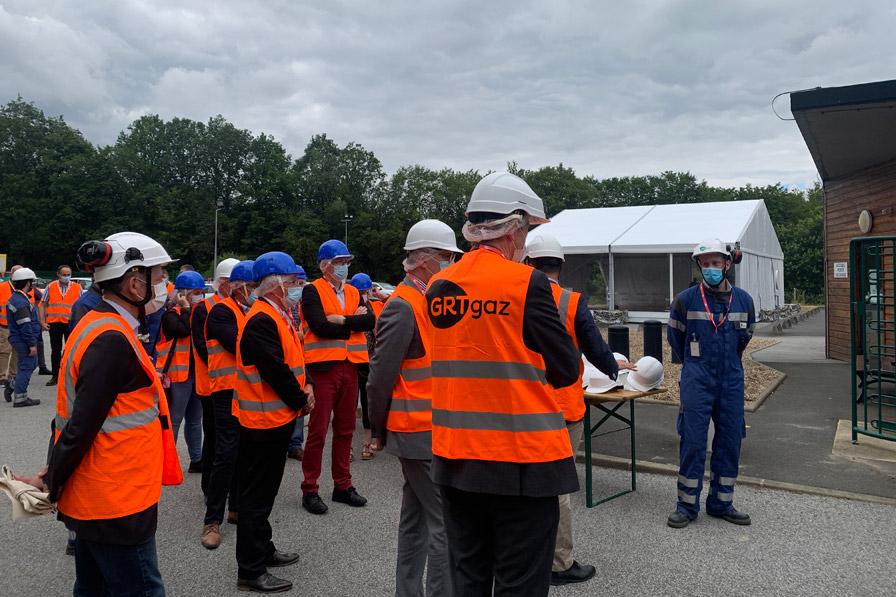GRTgaz’s Cherré-Au compressor station celebrates its 40th anniversary

In the presence of Jean-Charles GRELIER, Deputy for Sarthe, Jannick NIEL, Mayor of Cherré-Au, Etienne ROUX, General Secretary of the Sub-Prefecture of Mamers, Pierre DUVIEUSART, Deputy CEO of GRTgaz, and Sandrine MEUNIER, GRTgaz Director of Operations.
Role and missions of the station
The Cherré-Au compressor station highlights the way that GRTgaz’s role has changed over time. The station was built in 1981 to transport gas imported into France from the Montoir-de-Bretagne LNG terminal to consumption zones and storage facilities. It has since been adapted and renovated to provide the various gas shippers (ENGIE, EDF, Total Energies, etc.) with new ways of transporting gas between France’s North-South and East-West regions, while reducing greenhouse gas emissions. It now plays a central role in the national management of gas flows. Each year, between 10 and 20% of France's gas flows pass through Cherré-Au.

A zero agrochemicals treatment project launched in 2020
Station de Cherré-Au : pilot site for GRTgaz
GRTgaz launched a “zero agrochemicals” project in 2020, for which the Cherré-Au station will be a pilot site. This is part of the company’s action plan to reduce the environmental impact of its activities, and more specifically to preserve biodiversity at its compressor stations (beehives and insect hotels, reduction of soil artificialization, eco-grazing).
GRTgaz: a player committed to the energy transition
GRTgaz aims to have 40 TWh of renewable gas in the networks by 2030, i.e. 10% of final gas consumption in France.
To accommodate the renewable gases produced in the regions, GRTgaz is adapting its network by constructing so-called "reverse flow stations”1, small compression facilities that transfer the local biomethane surpluses from the distribution networks to the transmission network to be stored or consumed in neighbouring areas. Four such facilities are already operational in France, and 28 are in the process of being commissioned, including one in Céton in the Orne department, a neighbouring municipality of Cherré-Au. In the coming years, this will allow six projects to inject 124 GWh of biomethane2 into this territory that borders three French regions (Pays de la Loire, Normandy and Centre-Val de Loire).
1 Reverse flow facilities: gas installations designed to transfer local biomethane surpluses on the distribution networks to the transmission network, for transport to another territory and/or to storage facilities.
2 124 GWh: equivalent to the consumption of more than 10,000 gas-heated homes (new and old).
GRTgaz has 26 compressor stations spread over its 32,000 km underground gas transmission network. These are located at regular intervals (approximately every 200 km) over the main network made up of gas pipelines up to 1200 mm in diameter. The purpose of these surface facilities is to boost pressure to offset pressure losses as the gas travels along the pipes. They also regulate gas flows over the network (flow and pressure) and help ensure that the network functions under the best technical and economic conditions, while guaranteeing the safety of people and property and compliance with environmental standards.
Some of these stations, including the one in Cherré-Au, are fitted with interconnections that enable them to steer gas in different directions, as required, to optimise gas transmission capacities in meeting customer needs. Gas only passes through a compressor station; there are no storage facilities. The stations are fully automated via a supervision and remote control system that enables round-the-clock management and monitoring. GRTgaz's compressor stations meet a high level of safety and cybersecurity requirements.